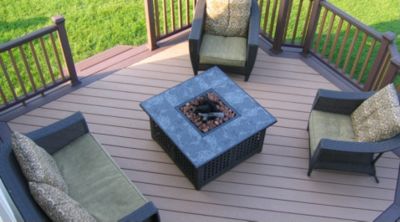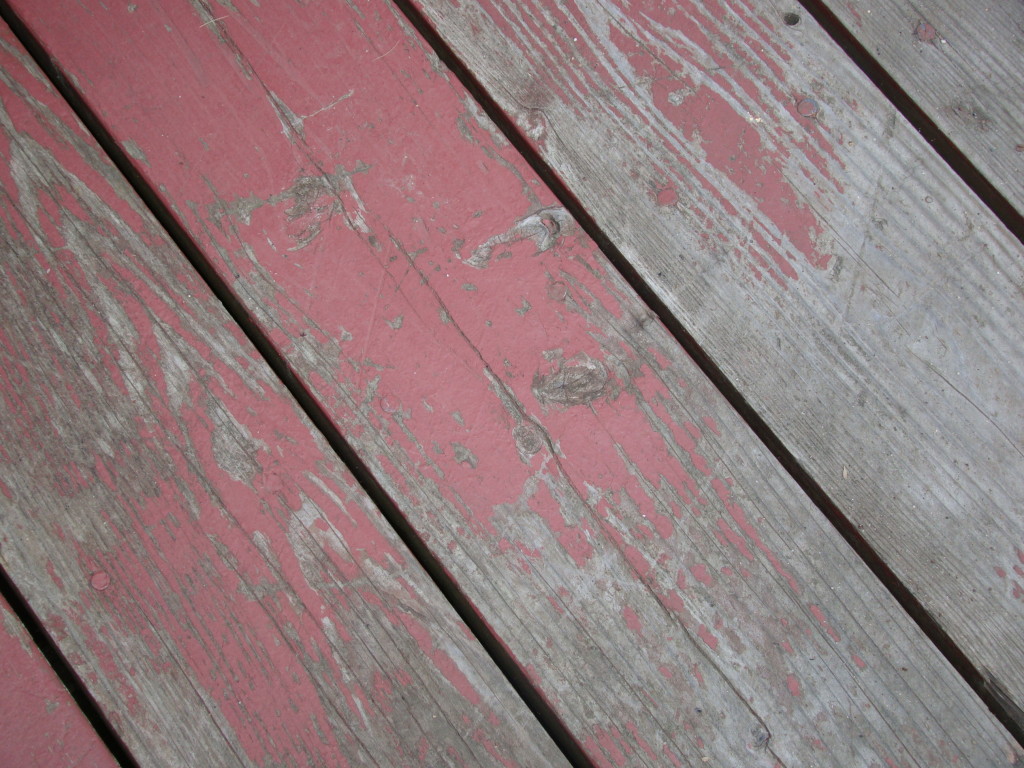With the start of warmer weather comes summertime projects. One of those is often the construction of an outdoor deck. These outdoor living spaces are so nice for spending a leisurely evening or enjoying your morning coffee. Before you decide on the materials and finishes for your deck, however, you should consider the on-going maintenance of your exterior space.
Outdoor decks can be made from wood or from composite materials such as Trex. Composites require little maintenance, as they are long-lasting and resistant to rot. However, the colors can fade, which is especially noticeable on the darker colors. Composites can be stained with stains especially made for composite materials. But, for this article, I’m going to focus on the finishes available for wood decks.
A wood deck requires on-going maintenance of some sort, usually in the form of paint, stain or a clear finish. These finishes help to protect the wood from rot and mildew, keeping your deck in good condition for years to come. The type of finish you select may be different depending on the look you prefer and maintenance you are willing to take on in the future.
If you select cedar boards for your new deck, you can leave the deck completely unfinished. Cedar has inherent properties making it very resistant to rot. With no finish, however, cedar will change color from its original warm hue to a silvery gray tone. This is not a sign of rot or mildew, and does not affect the structure of the wood – just the color. A clear finish on the cedar will prevent this from occurring, but it will often need to be reapplied on a yearly basis to maintain protection. (Click here or on the photo above to link to a great explanation of how to finish cedar and repair other issues with outdoor wood!)
Treated lumber is the other common option for new decking material. The wood is treated to resist rot, but it will still need to be finished in some way for further protection. Clear finishes are not recommended for treated lumber, since the wood often has a green or blueish tint to it – not what most homeowners are looking for. Instead, a stain or paint is a better option.
Stains come in semi-transparent colors and opaque colors. Semi-transparent stains color the wood but allow the natural grain to come through the finish. They also require less on-going maintenance than their opaque counterparts. This is because opaque stains and paints tend to flake off the surface of the wood, leaving bare wood in its place. Semi-transparent stains, on the other hand, fade from the surface of the wood in a less-dramatic fashion. So, while the color will lighten over time, the effect is less noticeable and the deck looks better between staining sessions.
An opaque stain or a paint also requires more prep time before refinishing your deck. The loose, flaking stain/paint will need to be scraped away so the new stain/paint can adhere to the wood beneath. Semi-transparent stains can often be top-coated with little more than a good washing of the wood’s surface.
One other point to consider when choosing a wood finish: remember that you can always go darker with a semi-transparent stain, but it is nearly impossible to lighten a stained finish later. If you are undecided about what color to choose, select the lighter of the options and know that you can go with a darker hue next time around. If you go too dark in the beginning, you are stuck with that color – or a darker one – for the life of the deck, in most cases.
With opaque stains and paints, however, you have more freedom to dramatically change your deck color later. The opacity of the finish allows you to completely cover the original stain/paint with the new color, giving you the option to lighten the color later if you so choose.
Whatever opacity you choose for your wood finish, be sure to buy a quality product that will hold up to the weather conditions in your area. If your home is subject to sea spray, make sure it will also withstand exposure to saltwater. Follow the directions carefully to ensure good adhesion and to minimize a flaking finish later. And, select a color that will blend with the other exterior colors on your home.
Both semi-transparent stains and opaque stains/paints have good points and bad. Choose carefully, and your new deck will serve you beautifully for years to come.
Pin It





